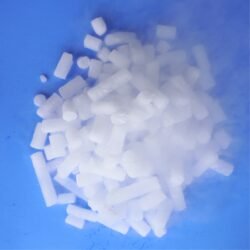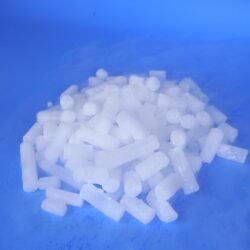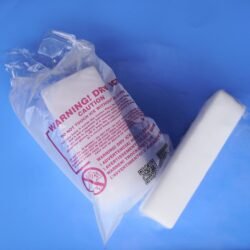The Role of Insulation in Dry Ice Storage
When it comes to transporting or storing dry ice, choosing the right insulation material is critical to maintaining its effectiveness and preventing excessive sublimation. Silver mylar bag insulation and foam insulation are two popular options for protecting dry ice, but each comes with unique advantages and disadvantages. In this blog post, we’ll explore the differences between these two materials and help you decide which is best for your specific needs.
For a detailed comparison, check out this silver mylar bag insulation vs. foam dry ice guide for in-depth insights.
Clear 3mm Bag for Dry Ice
A clear 3mm bag for dry ice is specifically designed to safely handle, store, and transport dry ice while maintaining durability and efficiency. Made from high-quality, thick plastic, the 3mm thickness ensures superior strength to withstand the extreme cold of dry ice, preventing tears, cracks, or leaks. This makes it perfect for both commercial and personal use, such as shipping perishable goods, medical supplies, or creating special effects.
The clear design of the bag allows for easy visibility of the dry ice and its contents, making it convenient for monitoring levels and ensuring safety compliance. Additionally, the construction minimizes the risk of exposure to carbon dioxide gas by creating a protective barrier while still allowing ventilation to prevent pressure buildup.
When paired with a reliable cooler for transportation, a clear 3mm bag ensures that dry ice stays cold longer, preserving the integrity of temperature-sensitive items. Whether you’re transporting dry ice for shipping, events, or industrial purposes, a clear 3mm bag for dry ice offers a reliable, sturdy, and practical solution for safe handling.
Silver Mylar Bag Insulation: Lightweight and Reflective
Advantages
- Reflective Properties: Silver mylar bags are excellent at reflecting radiant heat, helping to keep dry ice cool even in warmer environments.
- Lightweight Design: Mylar is thin and lightweight, making it a convenient choice for portable applications or when weight is a concern.
- Moisture Resistance: Mylar is highly resistant to moisture, ensuring that external humidity doesn’t compromise the cooling performance of dry ice.
- Cost-Effective: Mylar bags are generally more affordable and easy to use, making them a popular choice for small-scale or short-duration storage.
Disadvantages
- Limited Durability: Mylar bags are less durable than foam, making them prone to tearing or puncturing.
- Lower Insulation Capacity: While effective against radiant heat, mylar doesn’t provide as much insulation against ambient air temperatures compared to foam.
Foam Insulation: Thick and Reliable
Advantages
- Superior Thermal Resistance: Foam, particularly expanded polystyrene (EPS) or polyurethane, offers excellent thermal resistance, keeping dry ice at a lower temperature for longer periods.
- Durability: Foam insulation is rigid and durable, making it ideal for repeated use or for shipments that may experience rough handling.
- Customizable Sizes: Foam coolers and inserts come in various shapes and sizes, allowing for better fit and coverage around the dry ice.
- Shock Absorption: Foam provides additional protection for fragile or sensitive items during transport.
Disadvantages
- Heavier Weight: Foam is bulkier and heavier than mylar, which can add to shipping costs or reduce portability.
- Higher Cost: Foam products are typically more expensive than silver mylar bags, especially for larger containers.
- Moisture Sensitivity: While foam itself is moisture-resistant, prolonged exposure to wet conditions may degrade its structural integrity.
Black vs. Silver Mylar Bags: What’s the Real Difference?
When comparing black vs. silver mylar bags, the distinction goes beyond color—it’s rooted in how each material responds to heat and light. Silver mylar bags are coated with a reflective aluminum layer that bounces radiant heat away, making them highly effective at maintaining internal temperatures in environments exposed to sunlight or heat sources. This is especially useful when handling dry ice, which sublimates rapidly when exposed to ambient heat.
In contrast, black mylar bags absorb light and heat, converting it into thermal energy. This means they can actually accelerate the warming process inside the package, making them a poor choice for insulating frozen or temperature-sensitive contents. While black mylar may offer some UV protection for light-sensitive items, it lacks the thermal barrier needed for cold chain applications.
For dry ice storage or transportation, silver mylar bag insulation is clearly the superior option, offering both moisture resistance and thermal reflectivity. If the goal is to slow sublimation and preserve cold for as long as possible, silver wins every time—especially when paired with foam or layered cooling systems.
Applications: When to Use Mylar vs. Foam for Dry Ice
Use Silver Mylar Bag Insulation When:
- Portability is Key: Mylar’s lightweight nature makes it ideal for short-term or small-scale applications where portability is essential.
- Cost is a Concern: For one-time uses or limited budgets, mylar offers a cost-effective solution.
- Radiant Heat is the Main Issue: Mylar’s reflective properties work best in environments with significant radiant heat exposure, such as during outdoor events or shipments in sunny areas.
Use Foam Insulation When:
- Extended Storage is Needed: Foam is better for long-duration applications, such as shipping perishables or biological materials over several days.
- Durability is Required: For rugged or heavy-duty use cases, foam provides better protection against physical damage.
- Thermal Performance is Critical: Foam is the superior choice for maintaining extremely low temperatures and minimizing sublimation.
Comparing Performance: Mylar vs. Foam
| Feature | Silver Mylar Bag Insulation | Foam Insulation |
|---|---|---|
| Thermal Resistance | Moderate | High |
| Weight | Lightweight | Heavier |
| Durability | Moderate | High |
| Cost | Affordable | More Expensive |
| Moisture Resistance | High | Moderate |
| Ease of Use | Easy | Requires More Setup |
For more information on silver mylar bag insulation vs. foam dry ice, visit Sub Zero Dry Ice to explore high-quality insulation solutions.
Choosing the Right Insulation for Your Needs
The choice between silver mylar bag insulation and foam dry ice insulation depends on your specific application:
- Short-Term Use: If you’re transporting dry ice for a few hours or need a lightweight, cost-effective solution, silver mylar bags are a practical option.
- Long-Term Storage or Shipping: For extended durations or shipments that require maximum cooling efficiency, foam insulation is the clear winner.
Handling Dry Ice Safely: What You Should Know
Dry ice is a powerful cooling agent, but using it safely is just as important as choosing the right insulation. If you’ve ever touched dry ice without protection, you know it can cause instant cold burns—handling it with gloves or proper tools is a must. It’s also common to ask: is lab-grade dry ice safe? The answer depends on how and where it’s being used, especially in food, transport, or lab environments.
Whether you’re storing, transporting, or just working around dry ice, understanding these basic safety factors helps prevent damage to your products—and protects the people handling them. Always follow best practices when loading dry ice into insulated containers, and make sure your packaging can withstand extreme cold without compromising safety or performance.
FAQ: Mylar Bags, Insulation, and Storage
Is Mylar a good insulator for ice?
Yes, Mylar is a good insulator for ice, but primarily for short-term or surface-level thermal protection. Its reflective surface is excellent at deflecting radiant heat, which helps slow down the melting process. However, for long-term ice preservation—especially in high ambient temperatures—Mylar alone is not enough. It works best when combined with other insulating materials like foam or placed inside a sealed cooler.
Is Mylar better than aluminum foil for insulation?
Yes, Mylar is better than aluminum foil for insulation in most cases. While both materials reflect heat, Mylar is more durable, tear-resistant, and often comes with a layered construction that improves its performance. Mylar also resists moisture and doesn’t degrade as easily under fluctuating temperatures, making it a more reliable option for food, medical, or cold-chain insulation applications.
What should you not store in Mylar bags?
You should not store sharp, wet, or reactive materials in Mylar bags. Items like liquids, corrosive chemicals, or foods with high moisture content (without a proper moisture barrier) can damage the integrity of the bag. Mylar bags are also not ideal for storing oxygen-generating materials or anything that requires long-term freezing without an additional insulating layer.
Why is Mylar expensive?
Mylar is expensive due to its specialized manufacturing process, which involves coating polyethylene terephthalate (PET) film with a metallic reflective layer—typically aluminum. This gives it its strength, flexibility, and thermal properties. Additionally, high-performance Mylar bags designed for food-grade or medical use often include extra layers for moisture, gas, and light protection, further increasing production costs.
Do Mylar bags protect against humidity?
Yes, Mylar bags protect against humidity exceptionally well. Their multi-layered construction and low permeability make them an effective moisture barrier, preventing external humidity from entering and preserving the internal environment. This is why Mylar is a popular choice for storing dry goods, freeze-dried food, pharmaceuticals, and dry ice where moisture exposure can compromise product integrity.
Conclusion: The Best Choice for Dry Ice Insulation
Both silver mylar bags and foam insulation have their place in dry ice applications, and your decision will depend on factors like budget, duration, and environmental conditions.
At Sub Zero Dry Ice, we provide high-quality dry ice and expert advice to help you choose the best insulation solution for your application. Whether you need lightweight mylar insulation or the superior thermal performance of foam, we’ve got you covered.
Contact us today to learn more about our dry ice products and shipping solutions




